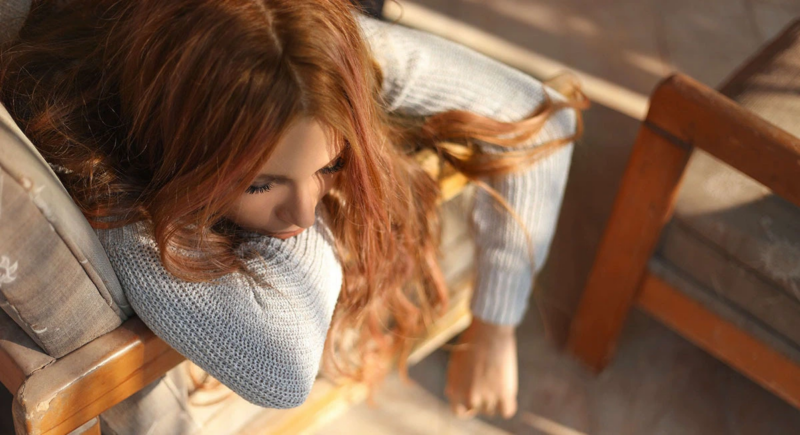
Depression Extends Beyond the Mind: Physical Symptoms of Major Depressive Disorder
Written By: Charlie Health Editorial Team

Clinically Reviewed By: Dr. Don Gasparini
Updated: November 24, 2023
6 min.
Feelings of sadness and hopelessness are hallmarks of depression, but the condition is also characterized by physical symptoms.
Learn more about our Clinical Review Process
People often assume that depression is only characterized by feelings of sadness, hopelessness, or a lack of interest in once-enjoyed activities. While those mental and mood-related symptoms are hallmarks of depression or a depressive episode, people can experience physical side effects of depression, too. In fact, one study of over 1,000 people with major depressive disorder (MDD), a common kind of clinical depression, found that 70% overall only reported physical symptoms of the condition. And according to the American Psychiatric Association, depression includes physical symptoms by definition. Physical symptoms are also linked with other kinds of depression, like severe depression and postpartum depression.
As a growing number of teenagers and adults in the United States deal with depression, it’s important to understand the many ways that this common condition can present. Below, we delve into common physical signs of depression, tips for coping with these symptoms, and how to incorporate physical symptom management into depression treatment.

We take a mind-body approach to healing
Develop a personalized treatment plan to cope with the physical and mental health symptoms of depression.
The effects of depression on the body and physical health
As mentioned, physical side effects are common in those experiencing a major depressive episode or living with chronic depression. For example, research has found that patients who come to their doctor’s office with more physical health symptoms are more likely to have a mood disorder, like MDD or bipolar disorder, than those without many health complaints. Here are some of the most common ways depression can show up in the body:
Gastrointestinal issues and depression
Research has long shown that the brain and gut are connected, including when it comes to depression. Low serotonin, a neurotransmitter that contributes to feelings of happiness and well-being, is often associated with depression, and recent research shows that it is also linked with gastrointestinal issues. Another study concluded that having gastrointestinal problems increases the probability of having depression.
Appetite changes and depression
Depression is known to cause fluctuations in appetite and weight. Some people with MDD experience increased appetite, while others lose their appetite. Research shows that this is likely because many brain regions involved in responding to food are also linked to depression.
Sleep disturbances and depression
The connection between sleep issues and depression is strong. According to one study, about three-quarters of people with depression experience symptoms of insomnia. That same study found that 40% of young people with depression and 10% of adults with depression have symptoms of oversleeping. Also, like many physical depression symptoms, sleep issues can be a risk factor for developing depression in the future. Studies have shown that insomnia in non-depressed people is a risk factor for later developing depression and when sleep symptoms persist in people with depression, it can lead to higher instances of risk and relapse for depressive episodes.

Muscle and joint pain and depression
Chronic pain is one of the predominant symptoms for many people with depression. One study of people reporting joint pain necessitating surgery found that each additional joint where people reported pain was linked to a 19% higher likelihood of self-reported depression. The research found that those with six or more painful joints had at least 2.5 times higher odds of depression compared to those with symptoms limited to the surgical joint, highlighting the link between chronic pain and depression.
Headaches and depression
There’s a strong connection between migraines and MDD, research shows. In fact, as many as 80% of people suffering from migraines deal with depression at some point, one study concluded. The link between intense headaches and depression is thought to be grounded in molecular genetics, these studies found.
5 tips for coping with physical symptoms of depression
Coping with depression symptoms that manifest in the body can be challenging, but there are strategies that may help alleviate discomfort and improve overall well-being. Here are five tips for how to cope with physical symptoms of MDD, severe depression, and other depressive disorders:
1. Talk about your physical symptoms with a healthcare provider
It’s crucial to consult with a healthcare professional to discuss your symptoms, get a proper diagnosis, and develop a treatment plan. Remember: depression is treatable, meaning symptom relief is possible. Your healthcare plan may involve a combination of psychotherapy, such as cognitive-behavioral therapy (CBT) or mindfulness-based approaches, and medication, both of which can be beneficial in addressing both the mental and physical aspects of depression (more on this below).
2. Develop a balanced routine
Maintaining a consistent, balanced routine has been shown to have a positive effect on mood and can help alleviate some common physical depressive symptoms. Start by incorporating physical activities you enjoy and eating a balanced, nutritious diet. It can also be helpful to establish a consistent sleep routine and aim for 7 to 9 hours of quality sleep each night. Poor sleep can exacerbate physical symptoms of depression, as discussed.
3. Practice mind-body stress reduction techniques
Practicing stress-reduction techniques such as deep breathing, meditation, or yoga can help manage both mental and physical stress associated with depressive symptoms. You may want to specifically explore mind-body techniques like progressive muscle relaxation or guided imagery to help relax the body and reduce tension.
4. Stay connected with others
Connect with friends, family, or support groups. Social support can play a crucial role in managing depression and its physical symptoms. Research shows isolation and loneliness can negatively impact the mental health recovery process, and social support from close friends and family members can make all the difference during mental health treatment, including depression treatment.
5. Set realistic goals
Break tasks into smaller, more manageable goals. For example, instead of setting out to run a mile, start by walking around the block. Celebrate small achievements, and don’t be too hard on yourself if progress is slow. Remember: healing is a journey!
Incorporating physical symptoms into treatment goals
In treating depression, it’s important to take a comprehensive approach that addresses both mental and physical aspects of the mental health condition. When starting to work with a healthcare provider, either primary care or mental health provider, share the ways that depression is affecting you physically—including the way the condition affects sleep, energy levels, appetite, and more.

Next, you and the provider can set clear treatment goals that consider both mental and physical well-being. Here are some examples of goals that take physical symptoms of MDD into consideration:
- Start medications that not only improve mood but work to alleviate physical symptoms, like sleep medication.
- Explore therapeutic methods, including mindfulness and relaxation exercises, that target physical symptoms.
- Try making a lifestyle change like regular exercise or a balanced diet that addresses physical symptoms like gastrointestinal issues.
Developing strategies for managing daily physical symptoms of depression will enhance your ability to cope with the mental health condition. Collaborative care with different healthcare professionals (like primary care and mental health providers) offers a comprehensive approach, and regular follow-up appointments allow for ongoing assessment and adjustments, ultimately promoting a better quality of life and treatment outcomes.
Treating the physical symptoms of depression with Charlie Health
If you’re dealing with physical symptoms of depression, ranging from headaches to more severe symptoms like heart disease, Charlie Health is here to help. Our virtual Intensive Outpatient Program (IOP) takes a holistic approach to healing, looking at the intersection of mental illness and physical health—including for clients with major depressive disorder, postpartum depression, and other mood disorders, like bipolar disorder. Charlie Health’s expert clinicians combine evidence-based therapies in individual therapy, group sessions, and family therapy to promote a mind-body approach to healing from mental illness. Fill out this short form to get a free Charlie Health assessment today.
References
https://www.nejm.org/doi/full/10.1056/nejm199910283411801
https://www.nimh.nih.gov/health/statistics/major-depression
https://europepmc.org/article/med/7987511
https://www.ncbi.nlm.nih.gov/pmc/articles/PMC3181883/
https://pubmed.ncbi.nlm.nih.gov/33275154/
https://www.degruyter.com/document/doi/10.1016/j.sjpain.2015.12.002/html
https://www.ncbi.nlm.nih.gov/pmc/articles/PMC7357317/
https://www.ncbi.nlm.nih.gov/pmc/articles/PMC8789191/
https://www.health.harvard.edu/diseases-and-conditions/the-gut-brain-connection
https://www.ncbi.nlm.nih.gov/pmc/articles/PMC4377445/
https://www.ncbi.nlm.nih.gov/pmc/articles/PMC4818200/
https://www.psychiatry.org/patients-families/depression/what-is-depression




